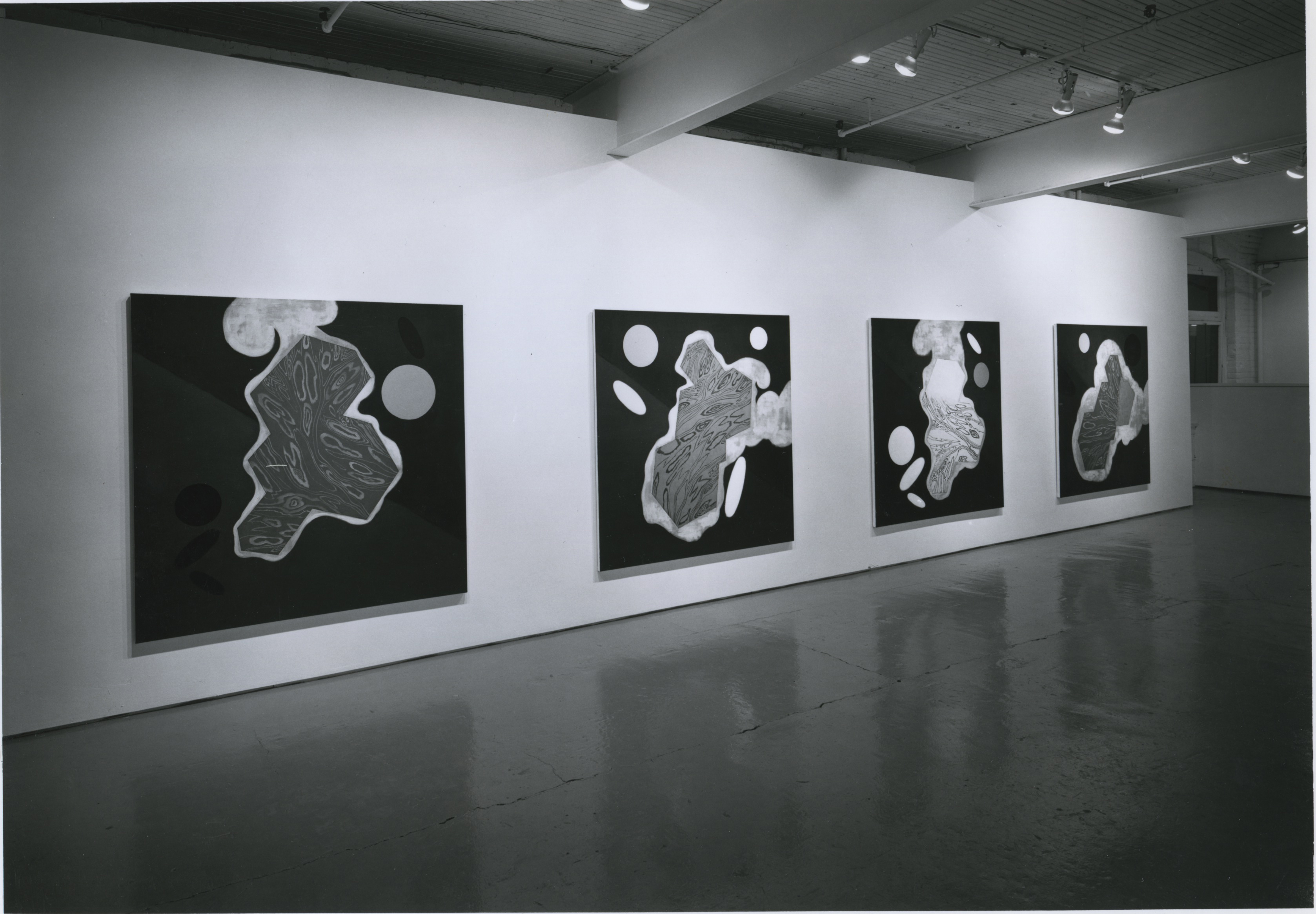East Gallery:
In describing his work, Robert Youds comments, "Our post-modern culture is one of exaggeration. Exaggeration of the real is the subject of my art. My paintings are of an abstract construct which employs as stratagem repetition and cultural signifier. They exist as similitude to actual observation, determined from the public realm of our techno-industrial environment." Quoting Umberto Eco,
We can identify it (hyperreality) through two typical slogans that pervade American advertising. The first, widely used by Coca-Cola but also frequent as a hyperbolic formula in everyday speech, is ihe "real thing"; the second, found in print and heard on TV is "more" - in the sense of "extra." The announcer doesn't say for example, "The program will continua" but rather that there is "More to come." In America you don't say that cigarette A is longer than cigarette B, but that there's "more" of it, more then you're used to having, more than you might want, leaving a surplus to throw away - that's prosperity.
This is the reason for this journey into hyperreality, in search of instances where American imagination demands the real thing and, to attain it, must fabricate the absolute fake; where boundaries between game and illusion are blurred, the art museum is contaminated by the freak show, and falsehood is enjoyed in a situation of "fulness", of "horror vacui". Excerpt from Travels in Hypperreality by Umberto Eco.
Review by Jane Perdue
NOW Magazine, January 8-14, 1987
Robert Youds is an assured painter who resists being typecast. He is not interested in maintaining a look or developing a style, thereby asserting a certain signature to his work Instead, his paintings have varied greatly in medium, content and application. They range from his early so-called expressionistic punk paintings, to coarse, naturalistic works in his previous solo show, and now, to a formal approach with implied coolness deliberately borrowed from the minimal aesthetics of the 70s.
"My paintings only mimic a certain style, sometimes formal, sometimes abstract expressionistic. For example, at the Vancouver Art Gallery show in I979, I did large day-glo works and was immediately labelled as a pyrotechnic punk artist. But really, all I was doing was mimicking a part of our culture--social graffiti. My stimulus, my conceptual mode bas always been the same--contemporary culture is my interest and that's what my work is all about."
More is Youd's latest series, in two parts, with eight paintings in total. These large canvases repeatedly offer the same, somewhat mundane geometric shapes against super-smooth glossy backgrounds, all rendered in garish, exaggerated colours. He experiments with an extreme palette, pushing the acrylic colours to such a limit that it's "just like cranking up the stereo as far as it will go."
The change in colouring and shapes refers to Youd's interest in alchemy and "the transmutation of objects much like when metal reaches a certain temperature that it changes colour--a fire- without flame!"
His simulated wood grains are depicted in various isometric shapes implying commodities, perhaps architecture. Turning up the volume, he adds layers of translucent paint, thus changing the surface and alluding to holography.
"I take from the things we are exposed to on a daily basis, such as television or a slick magazine photo--the techno-industrial in our culture. Any of the photographs in Scientific American serve as examples of the highly designed abstract visuals inherent in our culture. I'm trying to simulate the intensity, the seductiveness and the bombardment of this type of imagery. Somewhat similar to pop art. I take from everyday stimulus and throw it back to the viewer. But my paintings are less cynical and judge mental than pop images."
A MFA graduate from York University, originally from Vancouver and now a part-time teacher at Queen's University, Youds is confident about his priorities as an artist. He humourously alludes to such greats as Braque, Picasso and Rothko in his current works, and is still particularly interested in the developments of the 70s. He has never felt pressure to produce didactic, political statements that often have been de regueur for the 80s figurative painters.
"Diversity and variety are really important to me and I'm always challenging myself. But I haven't any interest in carrying on some kind of tradition, except my own."

